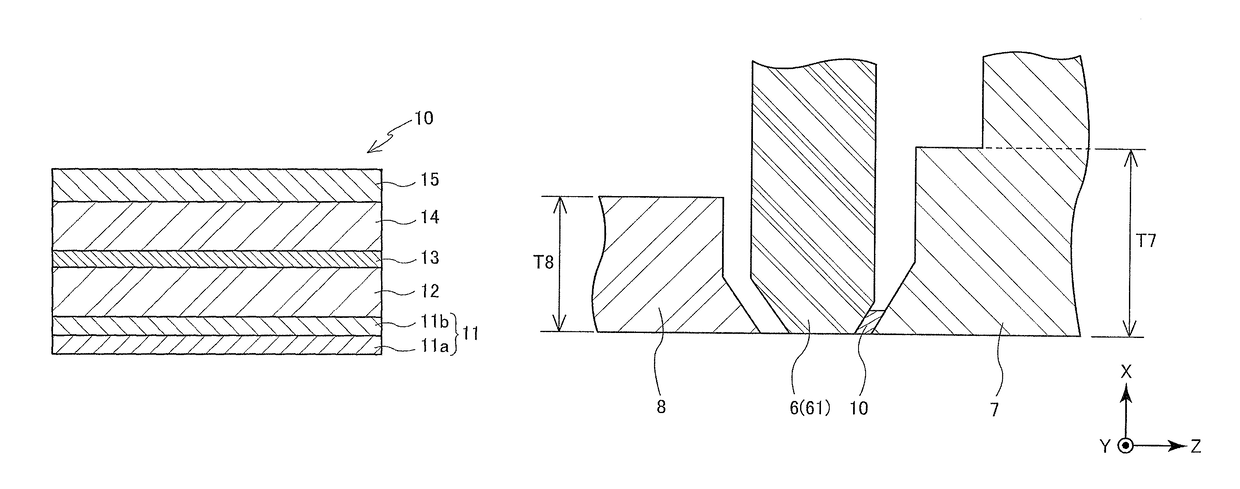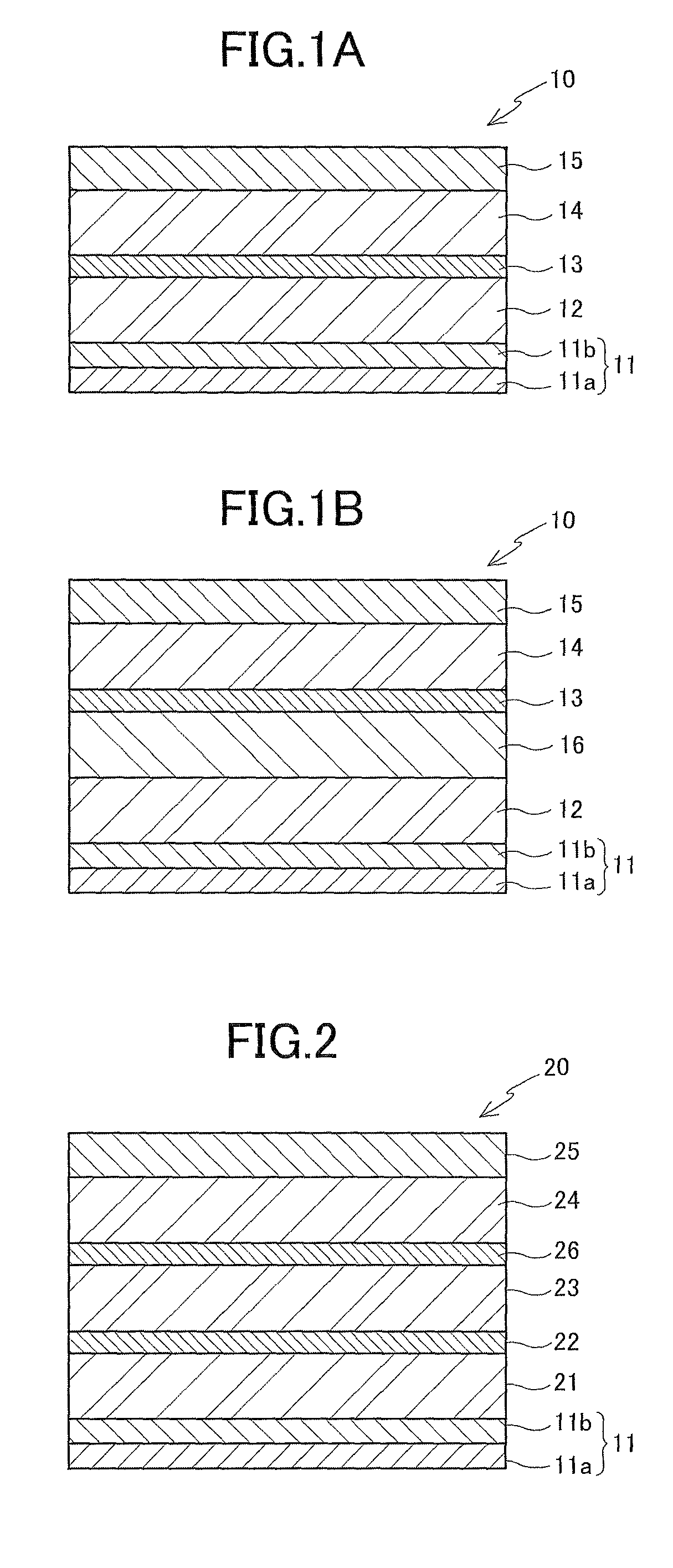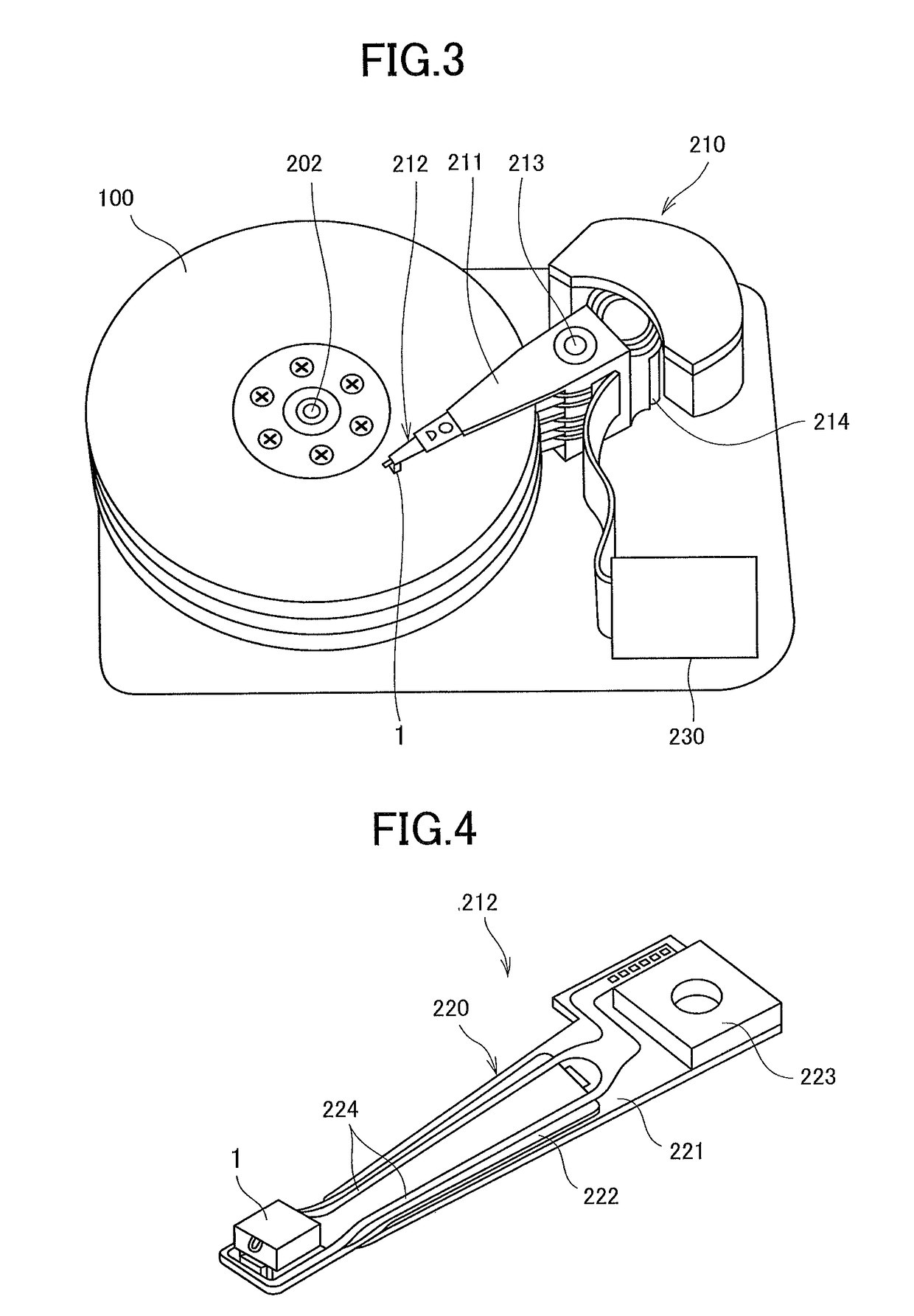Multilayer element including base multilayer body, magnetic sensor and microwave assisted magnetic head
a multi-layer element and multi-layer technology, applied in the field of multi-layer elements, can solve the problems of reducing the thermal stability of the magnetization of the magnetic grains, the inability to record onto the magnetic recording medium, and the anisotropy of the sil
- Summary
- Abstract
- Description
- Claims
- Application Information
AI Technical Summary
Benefits of technology
Problems solved by technology
Method used
Image
Examples
example 1
[0104]After a TaFe alloy layer (Ta:Fe=27 (at %):73 (at %)) with a film thickness of 10 Å was formed as a seed layer on a silicon wafer using a sputtering method, an IrCr alloy layer with a film thickness of 20 Å was formed as a buffer layer using the sputtering method; thereby, a base multilayer body (total film thickness: 30 Å) was produced. [CoFe / Ni]20 was formed as a spin injection layer (SIL) on the buffer layer of the base multilayer body using the sputtering method, and a multilayer Le1 was produced.
example 2
[0105]The base multilayer body was produced in a manner similar to Example 1 except that the TaCo alloy layer (Ta:Co=27 (at %):73 (at %)) with a film thickness of 10 Å was formed as a seed layer, [CoFe / Ni]20 was formed on the buffer layer of the base multilayer body as the SIL using the sputtering method, and a multilayer Le2 was produced.
example 3
[0106]The base multilayer body was produced in a manner similar to Example 1 except that the TaNi alloy layer (Ta:Ni=27 (at %):73 (at %)) was formed, [CoFe / Ni]20 was formed on the buffer layer of the base multilayer body as the SIL using the sputtering method, and a multilayer Le3 was produced.
PUM
| Property | Measurement | Unit |
|---|---|---|
| thickness | aaaaa | aaaaa |
| thickness | aaaaa | aaaaa |
| thickness | aaaaa | aaaaa |
Abstract
Description
Claims
Application Information
 Login to View More
Login to View More - R&D
- Intellectual Property
- Life Sciences
- Materials
- Tech Scout
- Unparalleled Data Quality
- Higher Quality Content
- 60% Fewer Hallucinations
Browse by: Latest US Patents, China's latest patents, Technical Efficacy Thesaurus, Application Domain, Technology Topic, Popular Technical Reports.
© 2025 PatSnap. All rights reserved.Legal|Privacy policy|Modern Slavery Act Transparency Statement|Sitemap|About US| Contact US: help@patsnap.com



